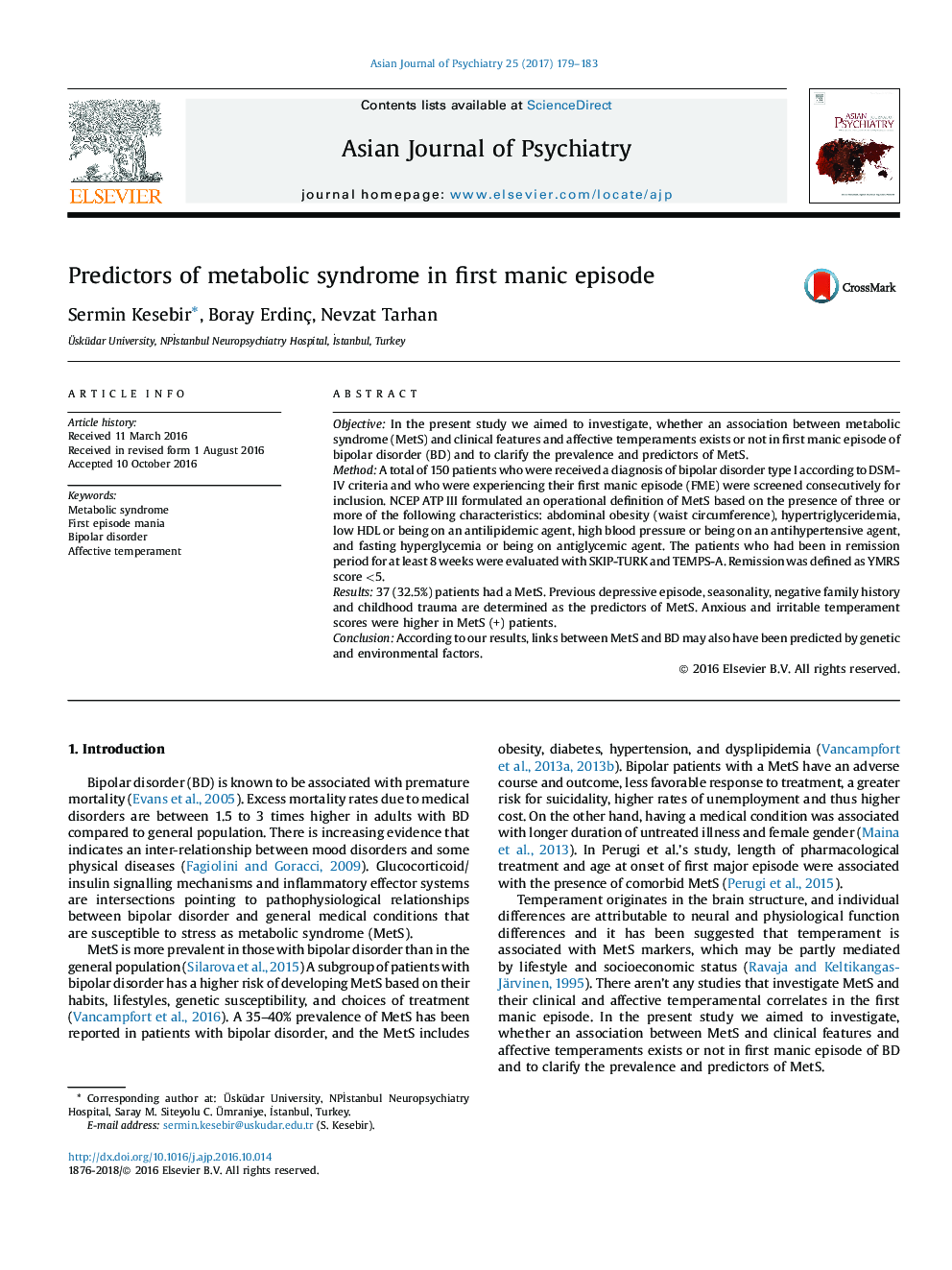| کد مقاله | کد نشریه | سال انتشار | مقاله انگلیسی | نسخه تمام متن |
|---|---|---|---|---|
| 4929812 | 1432578 | 2017 | 5 صفحه PDF | دانلود رایگان |
- This is a crossectional study.
- Some of the datas which were collected with SCIP-TURK are retrospective.
- TEMPS-A is a self-report instrument.
- The patients who had been in remission period for at least 8 weeks were evaluated with TEMPS-A.
- Remission was defined as YMRS score <5.
ObjectiveIn the present study we aimed to investigate, whether an association between metabolic syndrome (MetS) and clinical features and affective temperaments exists or not in first manic episode of bipolar disorder (BD) and to clarify the prevalence and predictors of MetS.MethodA total of 150 patients who were received a diagnosis of bipolar disorder type I according to DSM-IV criteria and who were experiencing their first manic episode (FME) were screened consecutively for inclusion. NCEP ATP III formulated an operational definition of MetS based on the presence of three or more of the following characteristics: abdominal obesity (waist circumference), hypertriglyceridemia, low HDL or being on an antilipidemic agent, high blood pressure or being on an antihypertensive agent, and fasting hyperglycemia or being on antiglycemic agent. The patients who had been in remission period for at least 8 weeks were evaluated with SKIP-TURK and TEMPS-A. Remission was defined as YMRS score <5.Results37 (32.5%) patients had a MetS. Previous depressive episode, seasonality, negative family history and childhood trauma are determined as the predictors of MetS. Anxious and irritable temperament scores were higher in MetS (+) patients.ConclusionAccording to our results, links between MetS and BD may also have been predicted by genetic and environmental factors.
Journal: Asian Journal of Psychiatry - Volume 25, February 2017, Pages 179-183
